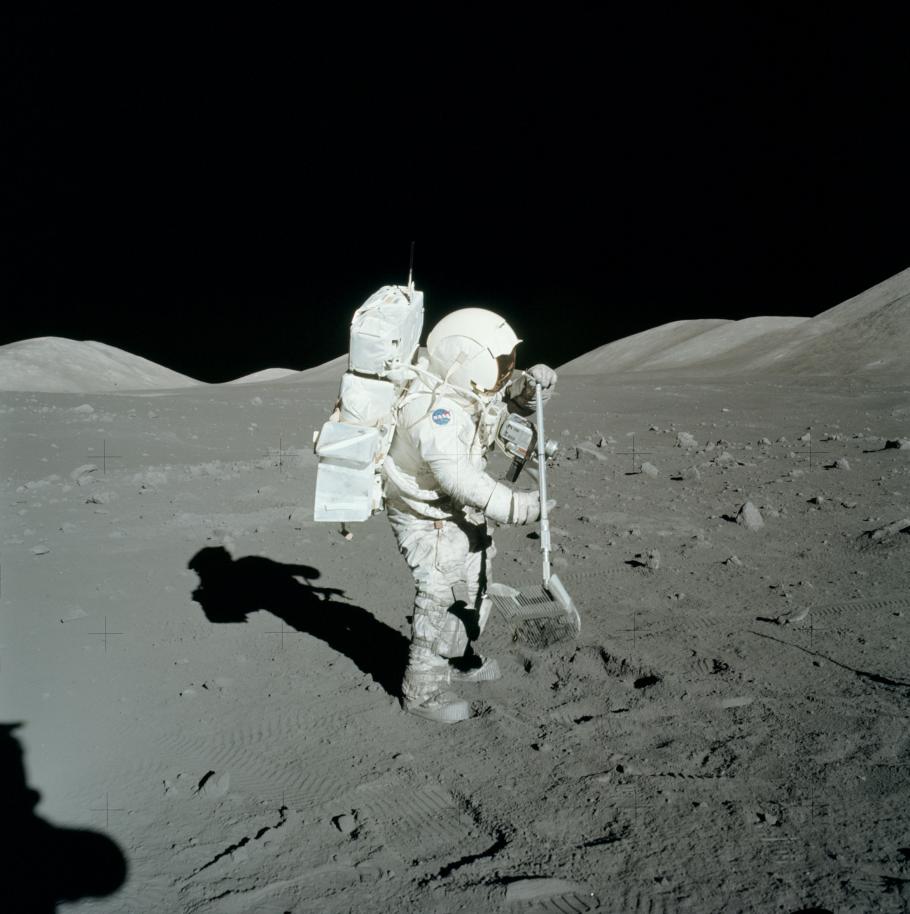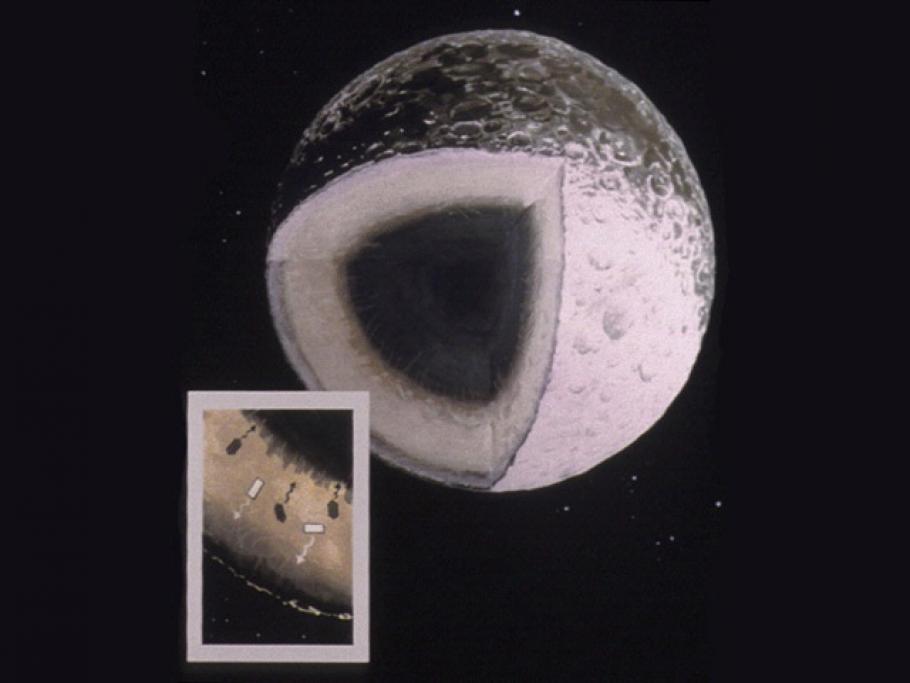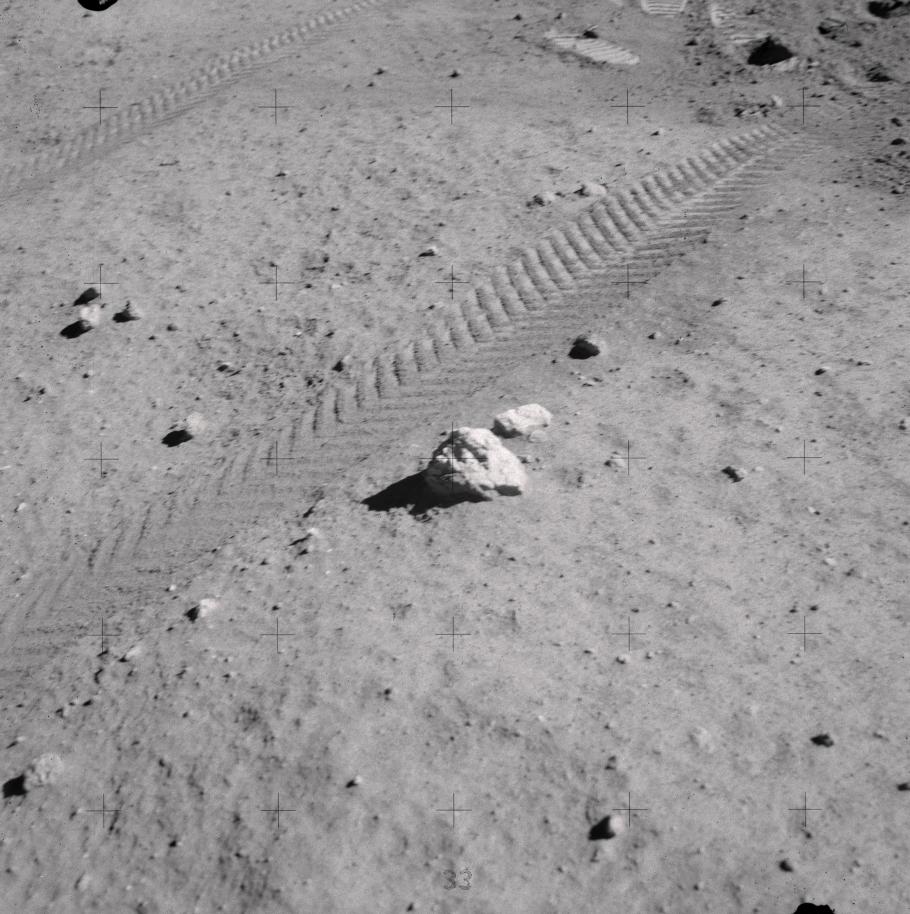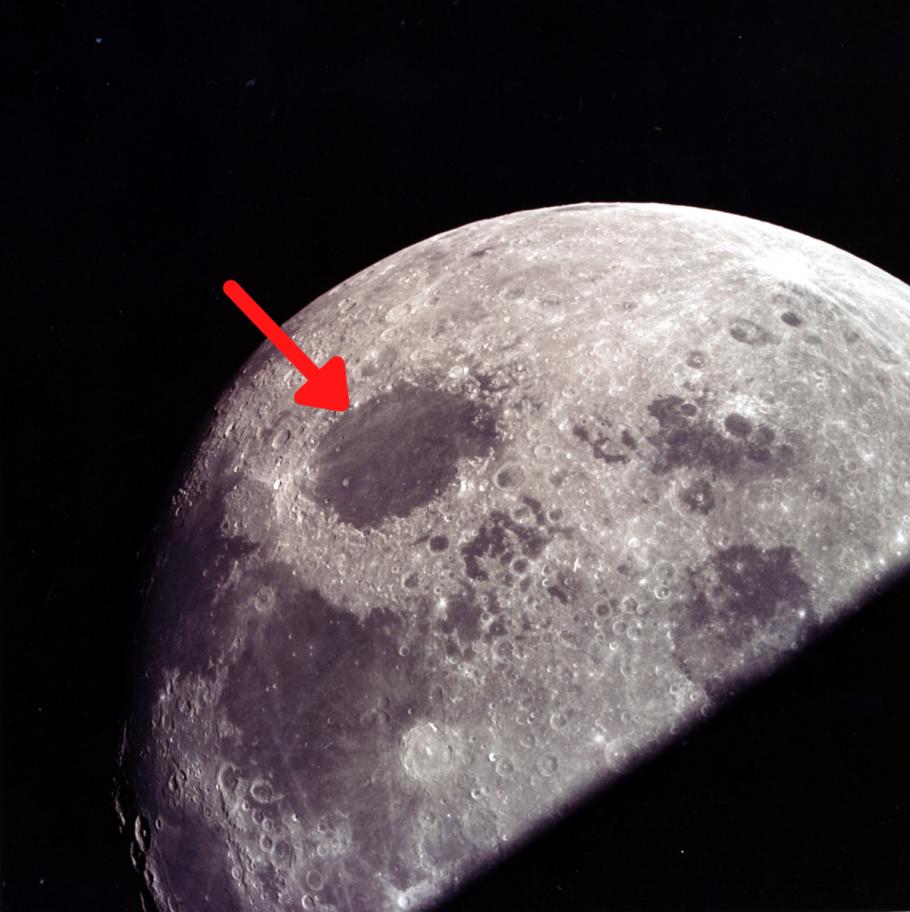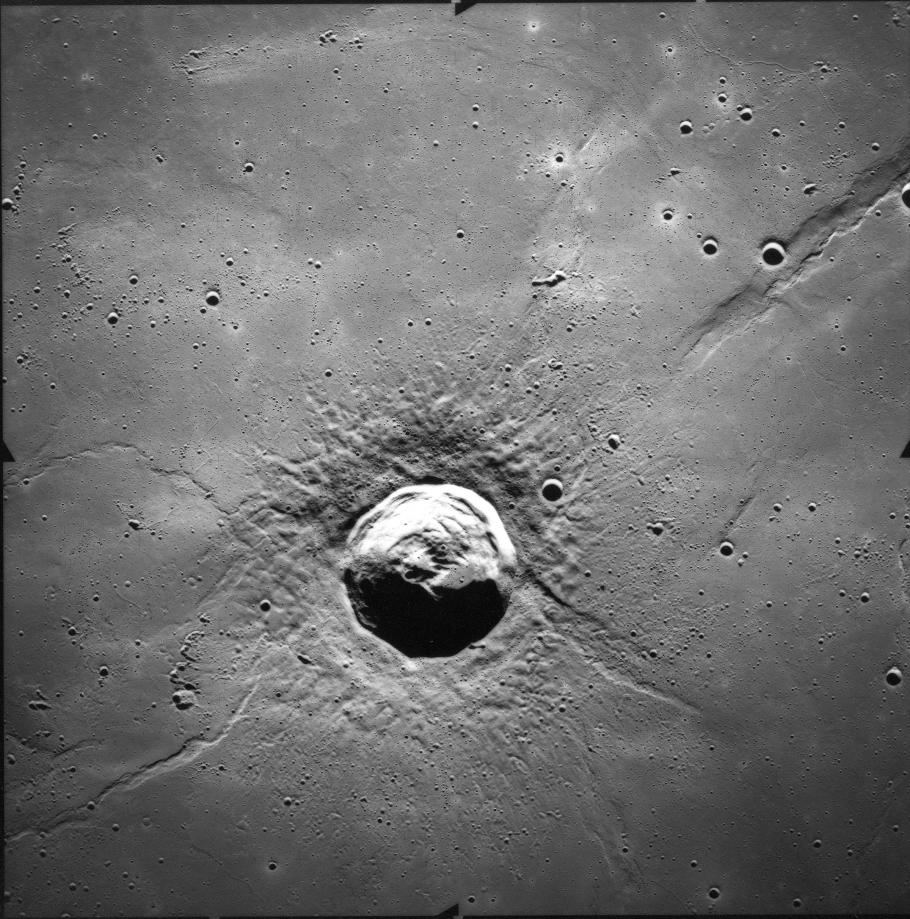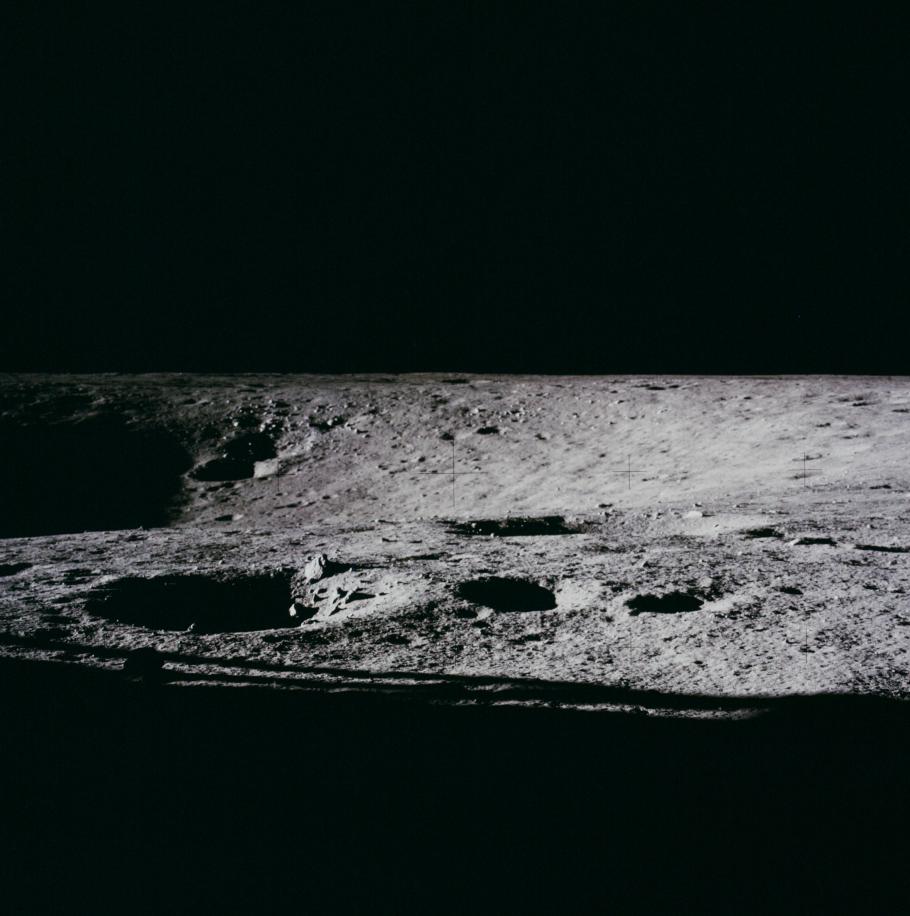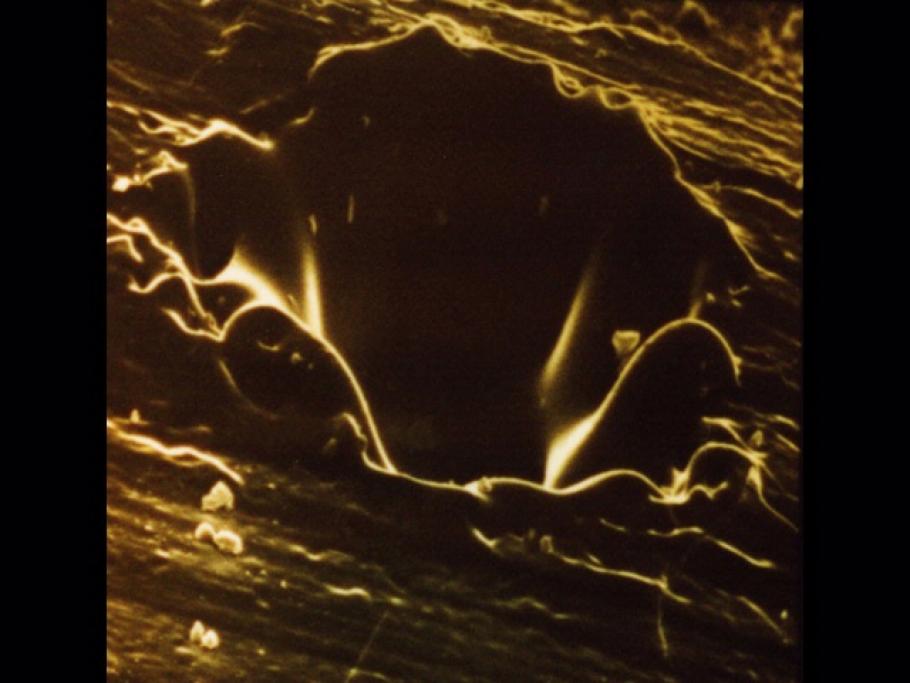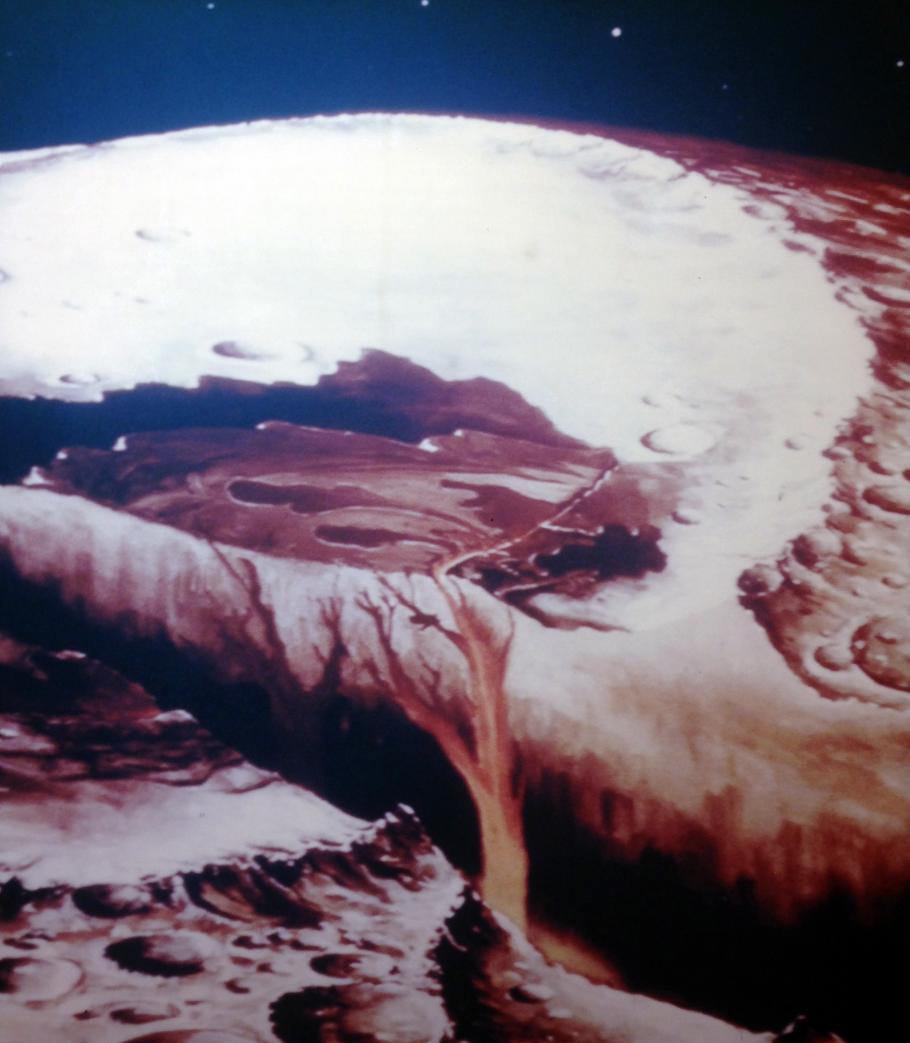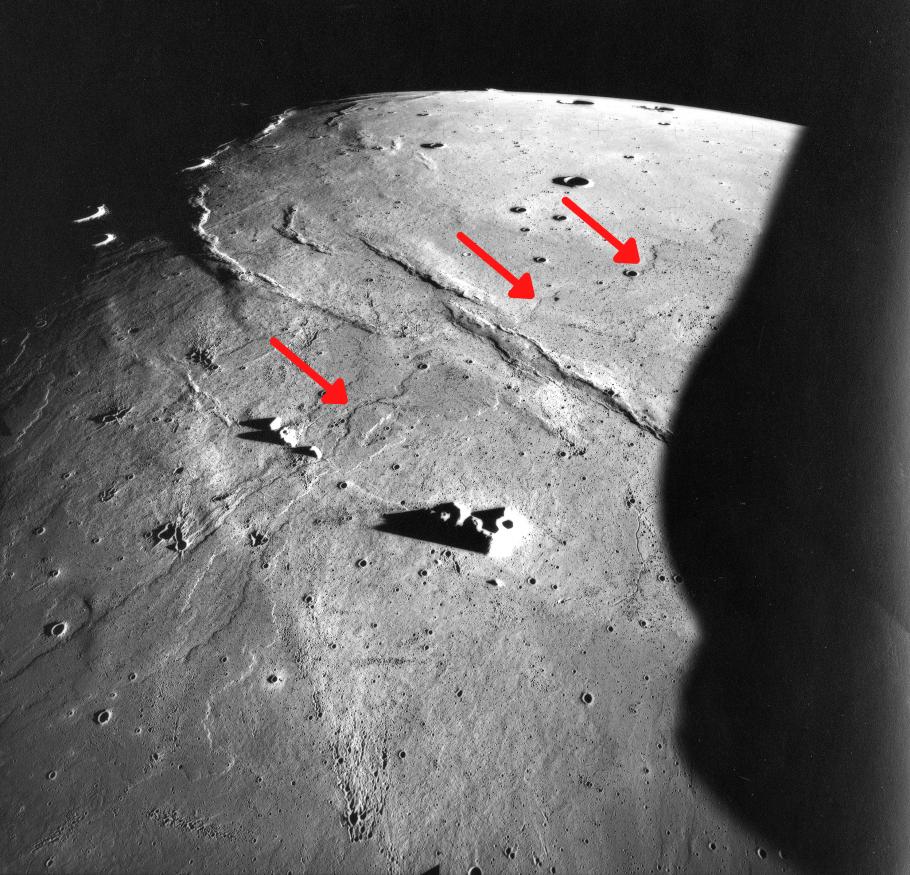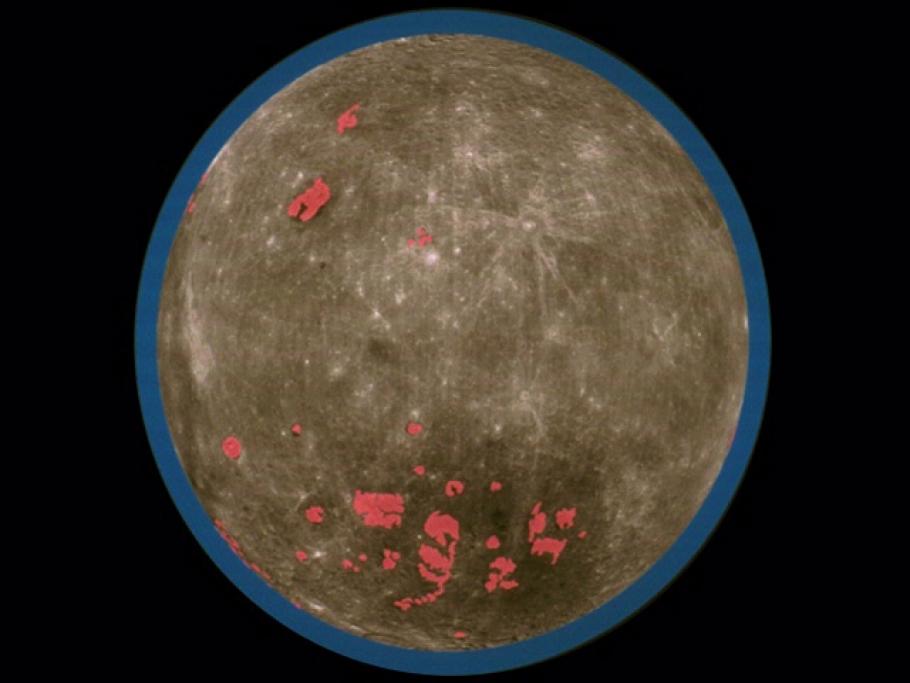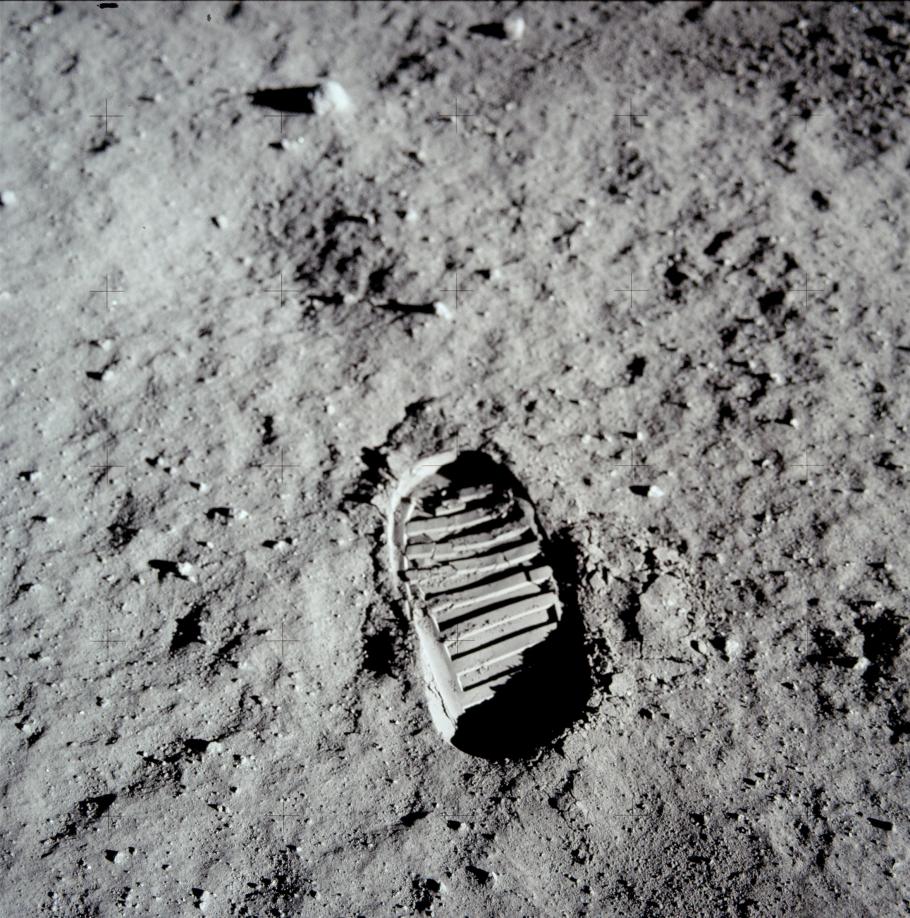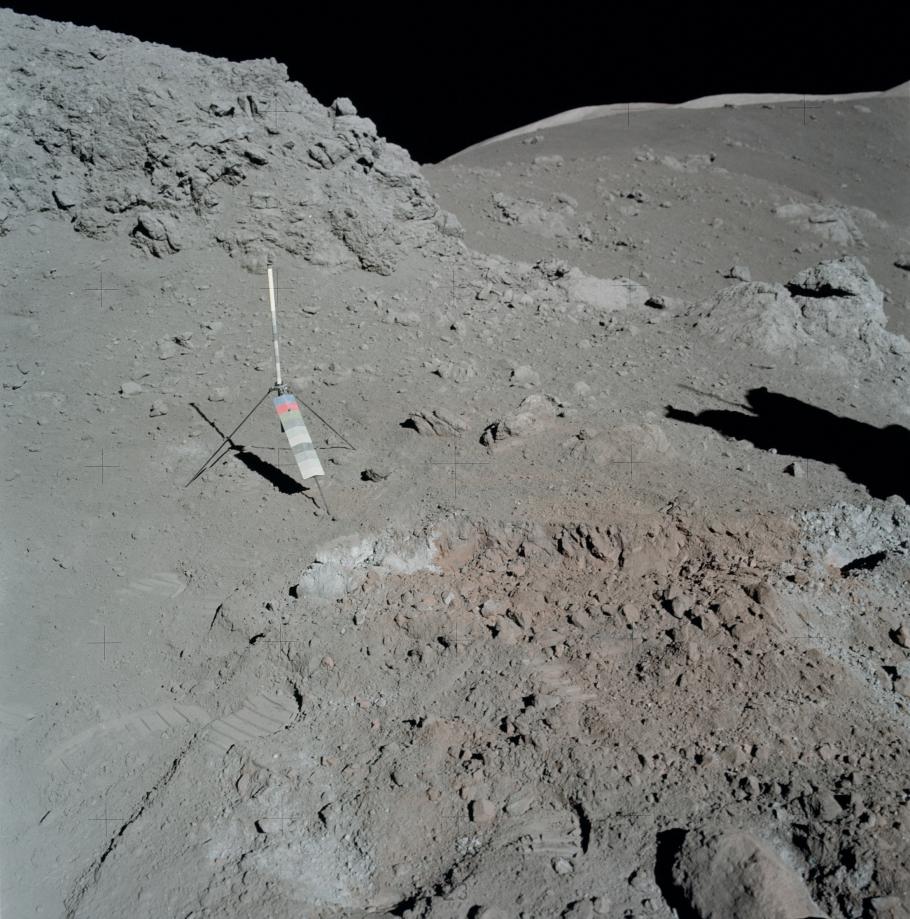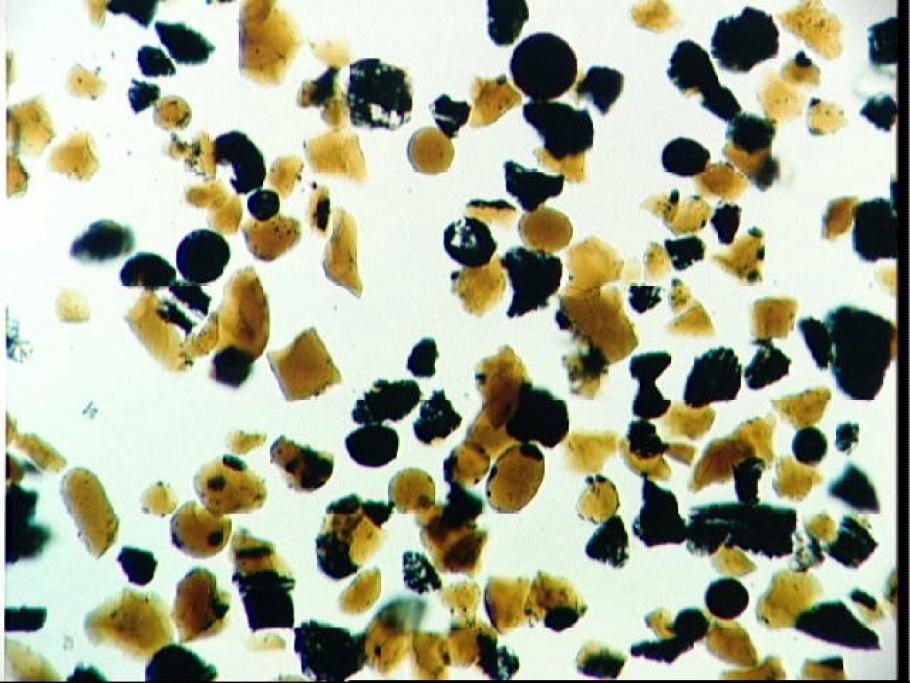Lunar Rocks
Lunar Rocks
The Apollo Program's lunar landings resulted in an abundance of new scientific data about the Moon. Perhaps the most dramatic result of this research was the more than 800 pounds of lunar rock and soil that were returned to Earth for analysis. These samples from the Moon offered a deeper appreciation of the evolution of our nearest planetary neighbor.
Lunar samples and data from Apollo transformed our understanding of the Moon and the solar system. The Moon has no wind, rain, rivers, oceans, or active volcanoes. Its battered and scarred surface records a violent history of explosive impacts and flowing lava. This story of the solar system’s early development has been erased on Earth. But it remains frozen in the face of the Moon.
One of the Museum's most enduring and popular exhibits has been a piece of the Moon that you can touch. The rock, on loan from NASA, was collected during the Apollo 17 mission and is one of only a few touchable lunar sample displays in the world. In fact, it was the very first touchable Moon rock exhibit when the Museum opened to the public in 1976.
Anorthosite: Highland Rock
As the Moon came together, it was mostly or entirely molten. As this magma ocean cooled, minerals began to crystallize. Heavier minerals sank, while lighter ones floated to the top and formed the outer crust of the Moon. This ancient crust has been battered by meteorite impacts to produce the rugged highlands we see today. These highlands consist of ancient lunar surface rock known as anorthosite as well as materials thrown out during the creation of impact basins.
One explanation for the presence of anorthosite in the lunar crust is based on the theory that the Moon was once molten. As the moon cooled, the lighter mineral floated toward the surface and formed anorthosite.
Anorthosite is a calcium rich white rock which is believed to make up the ancient crust of the Moon. It is is made up almost entirely of plagioclase feldspar, a common, light-weight, light-colored mineral on Earth. It is an igneous rock, which means it cooled and solidified from hot melted material. This mineral floated toward the surface and formed anorthosite. Heavier minerals sank and produced the denser interior of the Moon. The primitive lunar crust was most likely made up of anorthosite.
Anorthosite is an important rock type on the surface of the Moon as it makes up most of the lunar highlands and crust.
This sample collected by the astronauts of Apollo 16 has been determined to be 4.19 billion years old. This date corresponds to the formation of a large lunar impact basin from which the rock was thrown. Other studies indicate that the rock lay exposed on the lunar surface for 8.6 million years after it was moved again by the formation of a nearby crater known as Spook crater.
Breccia: The Smashed-Up Rock
After the lunar surface cooled and hardened, an onslaught of solar system debris rained down on it and blasted out craters and large basins. Lunar sample ages suggest this period of heavy and violent impacts took place about 4 billion years ago. Since then, impacts have continued to shape the face of the Moon. Small ones still scar its surface today.
A breccia is made of irregularly shaped pieces of other rocks. Through time, meteorites crashing into the Moon have smashed, shattered, and shocked the surface, crushing and melting rock fragments together. Most highland rocks are breccias, which shows how widespread and important this process is on the Moon.
The Crisium basin, about 700 kilometers (430 miles) in diameter is one of many large circular lunar depressions.
Crisium Basin
The Crisium basin is about 700 kilometers (430 miles) in diameter and is one of the many large circular lunar depressions. These basins or craters are formed by the collisions of very large meteoroids with the Moon. After the impacts, basalts from the interior of the Moon welled up and partially filled the basins. Material thrown out by the impacts that produced the basins is spread widely over the Moon.
Crater Lambert
The Crater Lambert, located in Mare Imbrium, measures 32 kilometers (20 miles) in diameter, and is surrounded by a blanket of material blasted out by the impact that produced the crater. Near the crater's rim the ejected material is thick and hilly. Farther away, the material is thinner and has a radial pattern.
Secondary Craters
Rocks thrown out during the formation of large impact craters often produce smaller, secondary craters when they fall back to the lunar surface. The 1-3-meter (3-10-foot) secondary craters in the foreground of this photograph have numerous rocks on their rims. These rocks were ejected from beneath the surface by the impacts.
Lunar breccias are fragmental rocks which are the products of meteoroid impacts. A common feature of many lunar crystalline rocks is the grinding and crushing, or granulation, of their minerals caused by repeated meteoric bombardment. This makes the original textures difficult to recognize.
This sample is a type called lithified mature soil. The sample consists of fragments of glass, minerals, and rock cemented together in a glassy matrix.
More About Breccia
Shock Melting
A glassy material produced by the shock of a meteoric impact is seen in this microscopic view from an Apollo 11 breccia sample. Since the glass is not uniform in composition, it strongly indicates that the glass was formed by shock melting produced by a nearby impact crater.
Zap Pits
Tiny impact craters, called "zap pits" are produced by small, high velocity particles and are common on the exposed faces of lunar rocks. One zap pit examined on the Moon was 50 microns, or 2/1000 of an inch, with a raised rim of glassy material caused by the impact.
Basalt: The Mare Rock
Millions of years after the giant impact basins formed, lava flowed up through cracks in the lunar crust and poured over the surface. The lava filled the circular basins and cooled, forming dark-colored, flat plains called maria (pronounced “MAH-ree-a”; singular: mare, “MAR-ay”).
Basalt is a fine-grained, dark-colored volcanic rock. It is rich in iron,
magnesium, and plagioclase feldspar, a common rock-forming mineral on Earth. The dark plains on the Moon are made up largely of basalts.
Basalt is not distributed uniformly over the Moon. Nearly 26% of the near side of the Moon is basalt whereas only 2% of the far side of the Moon is covered in basalt.
This basalt sample was collected near the rim of Hadley Rille. The fine-grained crystallinity and large holes indicate that this rock crystallized near the top of a molten lava flow.The holes in the rock formed when gas bubbles were trapped as the molten rock solidified. The grey color of this rock is due to the presence of dark-colored minerals.
Every rock can tell us a story, once we know how to read it. We can learn the history of how it formed and when, what it is made of, and how it has weathered the eons. But this particular Moon rock from Apollo 15 also has another story, a story of how two visitors from another world happened to collect it.
Lunar Soil
Before humans landed on the lunar surface, the Surveyor probes did. One of these probes, the Surveyor III, bounced upon landing, leaving a footprint. When images of the footprint were transmitted to Earth, it demonstrated that humans would be able to move along the lunar surface without sinking deep into the soil. Later, Buzz Aldrin's famous footprint reiterated lunar soil's fineness and cohesiveness. When the Lunar Roving Vehicle (LRV) was introduced starting with the Apollo 15 mission, studies of the wheels' performance and tracks contributed an improved understanding of the mechanical properties of lunar soil.
The lunar surface is covered with a thick layer of soil called regolith. Not at all like soil on Earth, regolith is made up of tiny, ground up, pulverized pieces of rock formed by the bombardment of the surface by meteorites. We often picture the Moon as a dull, colorless place. However once humans landed on the surface of the Moon, it was clear there was more to the Moon than meets the eye.
Learn about some of the more colorful aspects of lunar soil below.
Orange Soil
Apollo 17 astronauts discovered an area of orange soil on the rim of Shorty crater, in the Valley of Taurus-Littrow. A trench was dug to obtain samples of this material. Subsequent study of the orange soil indicates that it was formed during volcanic eruptions 3.7 billion years ago.
Lunar soil consists of particles of many sizes. Here individual particles less than 1 millimeter (4/100 inch) have been picked from the bulk soil and segregated by type. This soil is composed of aggregates, clumps of small particles 0.1-0.6 millimeters (4/1000-24/1000 inch) in diameter. Lunar soil contains fragments of the major lunar rock types: basalt, anorthosite, and breccia. In addition, round glass particles are common. The fragments that make up lunar soil are the products of the ceaseless bombardment of the Moon by meteoroids which smash and grind rocks into soil and weld soil into new rocks.

